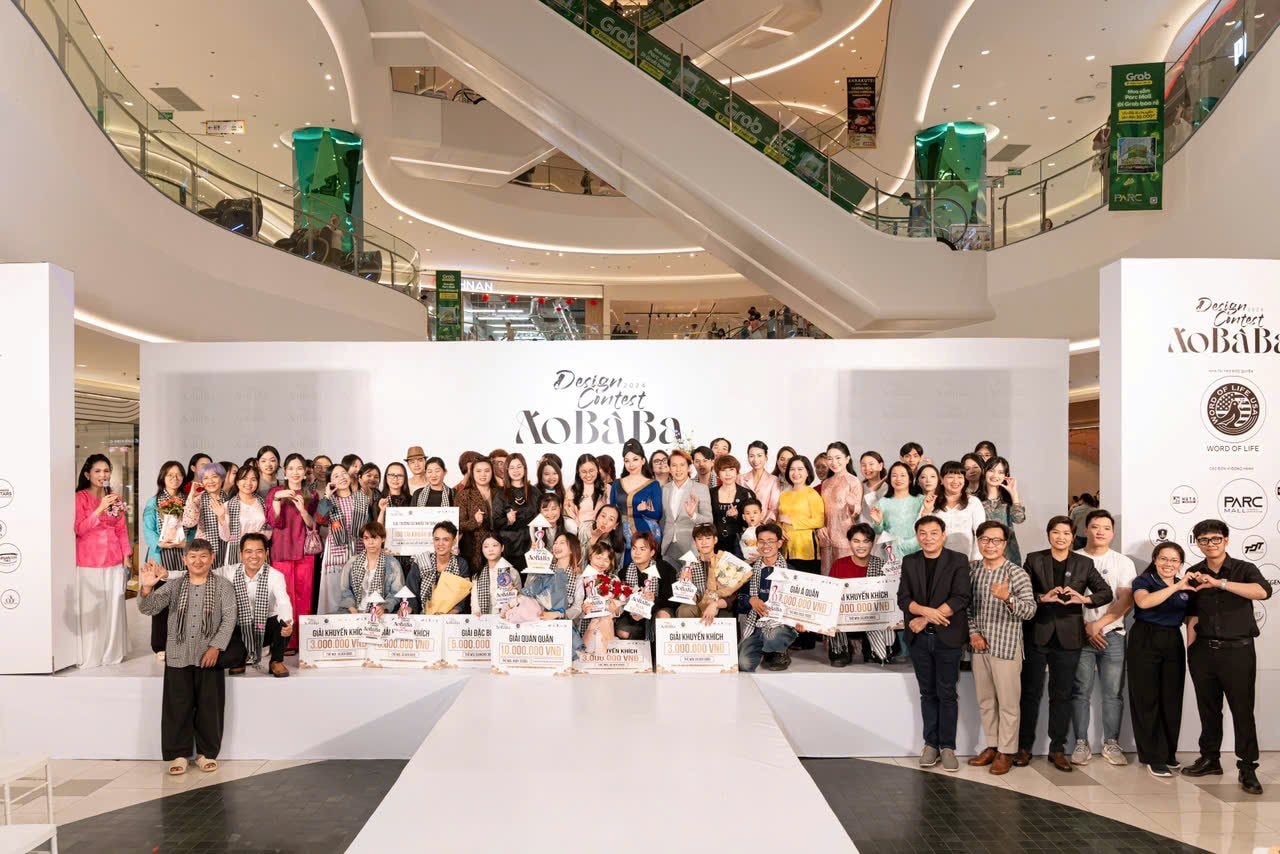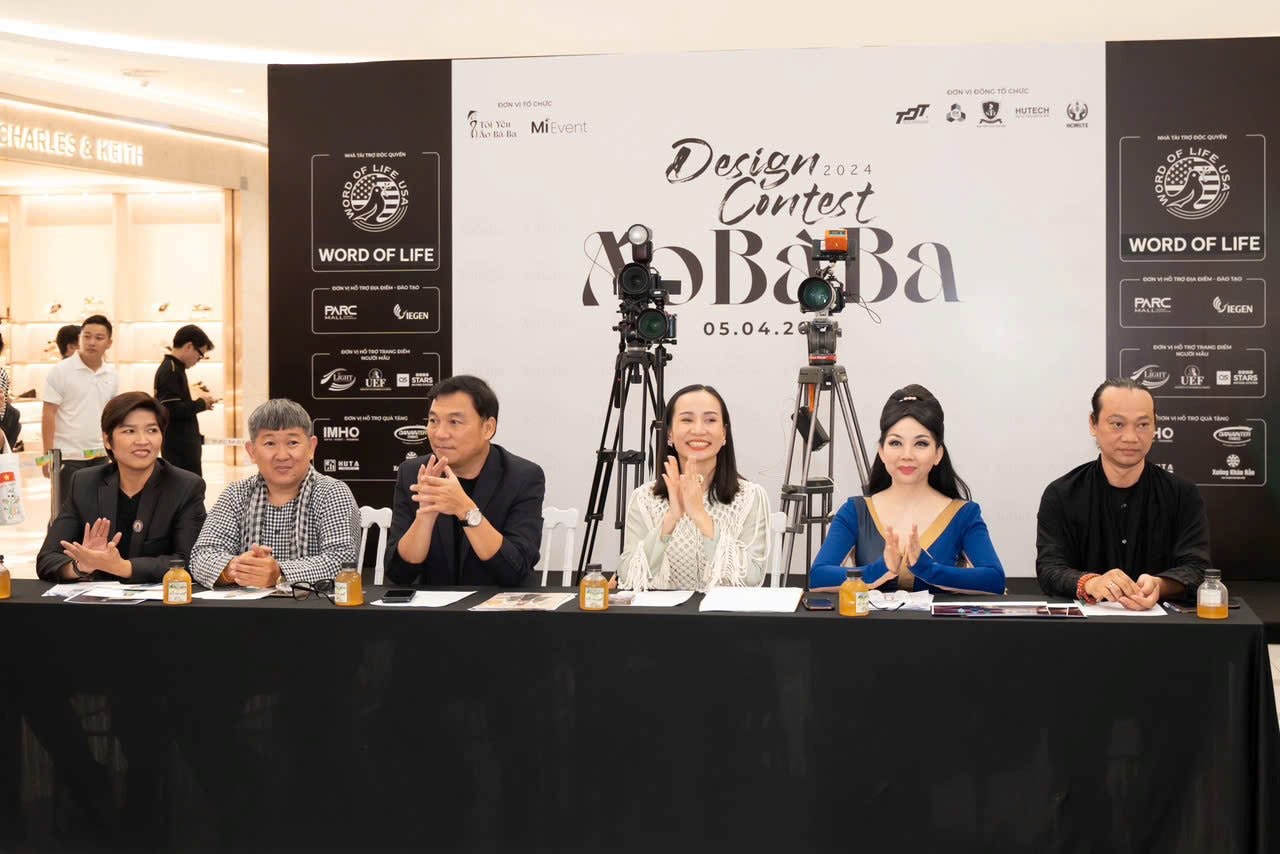
Reviving a Heritage
A standout feature of the contest was that most designs originated from personal inspirations – childhood memories, images of mothers and grandmothers, and cultural features specific to the southwestern river region. The design “Home” by Nguyen Quoc Dat – inspired by a rustic thatched house – deeply moved the judges, evoking the unique ambiance of the Mekong Delta. In Dat’s hands, the Áo Bà Ba became a "mobile home," carrying memories and familial warmth.
The panel of judges, composed of reputable designers and fashion artists, highly appreciated the creative spirit that remained faithful to the traditional essence in each design. Designer Hoai Sang, one of the judges, commented: “These young people have infused the Ba Ba shirt with a modern spirit that remains very Vietnamese.”

"I truly resonate with the project 'I Love the Áo Bà Ba' because this garment not only evokes cultural tradition, but also carries a mission of education, culture, and economic development. Fashion—when rooted in national identity—has the power to ignite pride, shape cultural character, and spread Vietnamese values to the world."
– Designer Quynh Paris, Head Judge of the "I Love the Áo Bà Ba" Contest
Mi Trang and the Revival of a Homeland Garment
One cannot fail to mention designer Mi Trang – the initiator of the "I Love the Áo Bà Ba" project launched in 2015, aimed at bringing this traditional Southern Vietnamese garment closer to younger generations. For her, the Áo Bà Ba is not merely clothing, but a cultural symbol – “the breath of the southern land.”
Mi Trang shared: “I grew up in village markets, where people wore Áo Bà Ba to shop, work in the fields, or attend festivals. Over time, those shirts faded away. I want to awaken those memories with a modern breath.”
Through various activities such as fashion shows, seminars, and collections displayed in artistic spaces, she has built a community of Áo Bà Ba lovers. The project also connects with traditional tailoring villages, contributing to the preservation of craftsmanship and providing jobs for local tailors.
.jpg)
In this competition, Mi Trang was not only a judge but also an inspiring companion for the students throughout the design process. She shared how impressed she was by the students’ unexpected creativity: “I was genuinely moved to see them incorporate cultural elements – from boats and rice paddies to river wharves – into every stitch. This is something I had never seen before in any previous fashion show.”
Young Creativity: Inheriting and Reinventing
The greatest surprise of the competition was the spirit of “tradition without being outdated” expressed by the students. Designs such as “Amidst the Hustle” by Tran Anh Khoa, “Ba Ba Goes Urban” by Huynh Long Tuan, and “Vietnam in Style” by Ta Thi My Linh all featured eco-friendly materials and modern tailoring techniques while preserving the soft, signature silhouette of the Áo Bà Ba.
.jpg)
.jpg)
.jpg)
More than just fashion, these collections were presented as artistic performances. Folk music and stage props like rice plants, boats, and dried straw were creatively integrated into the catwalk, creating a final night full of cultural and visual artistry.
The Áo Bà Ba and the Journey of Vietnamese Fashion
The success of the contest was not merely an individual event but marked a new chapter for Vietnam’s fashion industry. Amidst the dominance of fast fashion, the return of young designers to cultural roots is seen as a positive trend.
Many experts believe that the Áo Bà Ba can become everyday attire or even streetwear if designed appropriately. The contest entries showcased high applicability, from office wear to casual outings and artistic performances.
A Fresh Breath for an Old Symbol
The Áo Bà Ba Design Contest is not only a platform for creativity but also a responsible effort by young people and cultural enthusiasts. From the humble image of the traditional shirt, today’s Áo Bà Ba has stepped onto the runway with a new look – stylish, accessible, and full of pride.
The combination of personal creativity and love for cultural heritage is ushering in a new breeze, ensuring that the Áo Bà Ba is no longer just a relic of the past but a vibrant element of Vietnam’s contemporary and future fashion scene.











.jpg)
.png)












